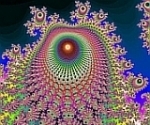Have I mentioned that I dislike cocktail parties?? All the meaningless, undirected, random chatter ....
-SWS (page 22 ) wrote:Velbor's also trying to understand why his dental device seems to work better for him than CPAP. I took some purely speculative attempts at answering that question.
Actually, my mention of my own situation on page 18, and my questions about CPAP mechanisms of action on page 21 (which I thought was the topic of most posts to that point) were not intentionally meant to be connected. Nonetheless, I don't object to linking the two, though I would word my own question (watched the debate last night) not so much in terms of why the oral appliance is better, but rather why CPAP (supposedly the "gold standard") doesn't work better for me than it does.
It's also been my general practice in this forum not to ask for personal OSA-related suggestions (I'm one of those reactionary "go back and knowledgeably talk to your doctor" advocates) but rather to collect facts and ideas and work them through myself. However, given the obvious brainpower collected here, I would be a fool not to take advantage of it. So I will respond (after a fashion) to:
split_city (page 23 ) wrote:A few questions for Velbor:
1) What's your AHI under baseline conditions?
Ouch. One of my least favorite questions. "I am not a number .... I am a free man!" (Patrick McGoohan, The Prisoner) Notwithstanding: my original full-night baseline PSG showed an AHI of about 28 (over 57 while in REM), with an AI of about 17 (all obstructive, no centrals), longest duration 54 seconds.
split_city wrote: 2) Do you have posture-dependent OSA?
Never well documented. I tend to sleep primarily on my side.
split_city wrote: 3) What type of events i.e. hypopneas, apneas do you predominantly have?
Overall statistics on CPAP, using ResMed auto set at 6 to 12, produce an average AHI of about 10 and an average AI of about 2. (Yes, yes, I know that's viewed as "too wide" a range. But I've run it at 9 to 12 and there's no significant change in outcome. Only rarely does the graph momentarily bump into 12 at the top.)
split_city wrote:4) Are you CPAP compliant?
5) Leaks an issue?
Do I sound like a very compliant sort of person? I think not! But when I use CPAP (or my appliance), it's 8 to 9 hours nightly, and leak is rarely an issue. Never tried it before, but I have moved two night graphs online (I'll give links rather than take up even more room within the post), dated only a week apart, answering these questions and reflecting my variability between the best of times (AHI=8.3, AI=0.4) and the worst of times (AHI=13.5, AI=4.5)
http://links.pictures.aol.com/pic/3150p ... 3Ig=_l.jpg
http://links.pictures.aol.com/pic/3150p ... 3Ig=_l.jpg
split_city wrote:Perhaps the OSA is caused by a craniofacial abnormality which is "fixed" more effectively by a mandibular splint. There are likely to be a number of potential reasons though.
Calling me abnormal, are you?? Well, OK. But not in terms of craniofacial structure. On the other hand, I do have a Mallampati Class 4 pharynx and a very narrow airway. Tough to intubate, but a great candidate for oral appliance therapy of my OSA.
Have I mentioned that I dislike cocktail parties?? But this one has been fun.
I particularly want to thank NightHawkeye for the diagram posted on Page 22. It portrays, more effectively than any other I've seen, how a "radial" pressure differential from CPAP can exist between the airway and the outside, which could indeed involve the movement of "craniofacial structures". So I retract my ill-advised suggestion that the airway is radially rigid. I also want to thank -SWS for his introduction of the concept of "inflation", reminding me that the "limp balloon" model in fact has a closed end. And I would thank SAG for his "thought processes" reflections, which are clearly unrelated to the "limp balloon" model.















